Did you know that some vegetables can go from seed to harvest in just four to six weeks? Imagine having a bountiful harvest of fresh, homegrown produce in such a short amount of time! With the right knowledge and techniques, you can enjoy the satisfaction of growing your own speedy harvest vegetables.
Key Takeaways:
- Spring and fall are the best seasons to grow fast-growing vegetables.
- Choose vegetables like leafy greens, carrots, beets, radishes, and peas for a quick harvest.
- Start from seeds and provide optimal growing conditions for accelerated growth.
- Consider growing in containers if you have limited space.
- Protect your plants from frost and extend your growing season.
Getting Started
Before you begin planting your fast-growing vegetables, it’s important to understand the basics. Whether you have a spacious backyard or a small balcony, creating a vegetable garden is an exciting and rewarding experience. Here are some key steps to get you started:
- Choose the Perfect Spot: Find a suitable location for your vegetable garden. Ensure it receives at least 6-8 hours of sunlight daily. If you have limited space, consider using containers or vertical gardening techniques.
- Gather the Essentials: Collect the necessary tools and materials, including a spade or shovel, gardening gloves, watering can or hose, and organic compost or fertilizer.
- Seeds vs. Transplants: Decide whether you want to start your fast-growing vegetables from seeds or purchase transplants from a local nursery. Starting from seeds allows you to choose from a wider variety of vegetables and is usually more cost-effective.
- Design Your Garden Layout: Plan your garden layout, considering factors such as plant spacing, companion planting, and accessibility for watering and harvesting. This will help maximize your space and ensure your plants thrive.
- Choose Fast-Growing Seeds: Select seeds that are known for their quick growth and high yield. Look for varieties that are specifically labeled as fast-maturing or early harvest.
- Consider Climate and Soil Conditions: Research the specific climate and soil requirements for the vegetables you plan to grow. Ensure your garden soil is well-draining, rich in organic matter, and pH-balanced for optimal growth.
- Prepare the Soil: Before planting, prepare the soil by removing any weeds or debris and loosening it with a garden fork or tiller. Amend the soil with compost or organic matter to improve its fertility.
By following these steps, you’ll be well on your way to establishing a thriving vegetable garden that will yield a bountiful harvest of fast-growing vegetables.
When Should I Sow?
The optimal time to sow fast-growing vegetables is during the spring or early fall when the growing conditions are cool. It’s important to ensure that the soil temperature remains between 50 to 68 °F (10 to 20°C) consistently for successful germination. Each vegetable has its own specific sowing guidelines, so be sure to refer to the seed packets for detailed instructions. Starting your sowing process early will help ensure a quick and abundant harvest.
Recommended Sowing Times for Popular Fast-Growing Vegetables:
| Vegetable | Optimal Sowing Time |
|---|---|
| Lettuce | Spring or early fall |
| Radishes | Spring or early fall |
| Spinach | Spring or early fall |
| Carrots | Spring or early fall |
| Peas | Spring or early fall |
“By sowing fast-growing vegetables during the optimal times, you can take advantage of cool growing conditions and ensure successful germination.”
Starting your sowing process early can give your fast-growing vegetables a head start and allow them to thrive in the cool temperatures. This will result in a quicker harvest and a more productive garden overall. Remember to check the specific sowing guidelines for each vegetable to ensure the best results.
By following these guidelines and sowing your fast-growing vegetables at the optimal times, you can maximize your chances of a successful and abundant harvest. The cool growing conditions in the spring and early fall provide the perfect environment for these vegetables to flourish. Get your seeds ready, prepare your soil, and start sowing for a bountiful harvest!
Can I Grow in Containers?
Yes, you can definitely grow fast-growing vegetables in containers. Container gardening is a perfect solution for small-space gardening, allowing you to grow vegetables in pots and enjoy the satisfaction of homegrown produce. It’s a convenient and effective way to cultivate a bountiful vegetable garden, even if you have limited space.
When choosing containers for your vegetables, opt for pots that are at least 12 inches in diameter and 8 inches deep. This size provides enough space for the roots to grow and allows for proper drainage. Make sure your containers have drainage holes to prevent waterlogging, which can lead to root rot.
Using organic potting mix specifically designed for growing vegetables is essential for the success of container gardening. This type of potting mix is lightweight, well-draining, and nutrient-rich, providing an optimal environment for your plants to thrive.
Place your containers in an area that receives the recommended amount of sunlight for your chosen vegetables. Most fast-growing vegetables require at least 6 hours of direct sunlight per day. Pay attention to the natural light patterns in your space and position your containers accordingly.
Regular watering is crucial for container-grown vegetables. Keep the soil consistently moist, but never allow it to become waterlogged or dry out completely. Monitor the moisture level by sticking your finger into the soil; if it feels dry up to your knuckle, it’s time to water. Avoid wetting the foliage to prevent disease and fungus.
Containers provide an opportunity to get creative with your garden design. You can arrange different vegetables in separate pots or combine compatible plants in a single container for a beautiful and productive display. Consider companion planting, where certain plants benefit from being grown together, enhancing their growth and deterring pests.
Table: Popular Vegetables for Container Gardening
| Vegetable | Container Size | Recommended Sunlight | Watering |
|---|---|---|---|
| Lettuce | 8-12 inches deep | 6-8 hours per day | Consistently moist |
| Tomatoes | 18-24 inches deep | 6-8 hours per day | Regular, water when the top inch of soil is dry |
| Herbs (Basil, Mint, Parsley) | 6-8 inches deep | 6-8 hours per day | Moist, allow the soil to dry slightly between waterings |
| Radishes | 4-6 inches deep | 6-8 hours per day | Consistently moist |
Source: Adapted from Your Vegetable Container Garden: Quick Tips for Success
With container gardening, you can enjoy the benefits of growing vegetables even in a limited space. Whether you have a balcony, patio, or small backyard, you can create a thriving garden and enjoy the taste of homegrown vegetables.
20 Quick-Growing Vegetables
Looking for fast-growing vegetables that can provide a bountiful harvest in no time? Here are 20 quick-growing vegetables that you can grow in your garden for a speedy harvest:
- Lettuce
- Arugula
- Beets
- Broccoli
- Carrots
- Endive
- Kale
- Kohlrabi
- Leaf lettuce
- Mache (corn salad)
- Mesclun mix
- Microgreens
- Mizuna
- Mustard greens
- Scallions (green onions)
- Pak choi
- Peas
- Radish
- Spinach
- Green beans
- Zucchini
Each of these vegetables has a relatively short time from seed to harvest, allowing you to enjoy fresh produce in no time.
Resources
As you embark on your vegetable gardening journey, it’s important to have access to valuable resources that can guide you in successfully growing quick harvest vegetables. Here are some essential resources to assist you:
Seed Sowing Tips and Techniques
If you’re new to seed sowing or looking to expand your knowledge, there are numerous guides and articles available online that provide valuable tips and techniques. These resources can help you understand the best practices for sowing seeds, including proper seed treatment, soil preparation, watering, and temperature control.
Reputable Seed Suppliers
When sourcing seeds for your fast-growing vegetables, it’s essential to rely on reputable seed suppliers that offer a wide selection of high-quality seeds. Look for suppliers with a proven track record and positive customer reviews. By choosing reliable suppliers, you can ensure that you have access to a diverse range of fast-growing vegetable seeds that will thrive in your garden.
Printable List of Suggested Vegetables
To simplify your vegetable garden planning, you can print out a list of the suggested fast-growing vegetables mentioned in this article. Having a physical copy of the list allows for easy reference and can serve as a useful reminder of the vegetables you want to include in your garden. Keep the list handy to stay organized and make the most of your gardening efforts.
Remember, the key to successful vegetable gardening lies in equipping yourself with valuable resources and information. By utilizing seed sowing tips, relying on reputable seed suppliers, and having a printable list readily available, you’re setting yourself up for a fruitful and rewarding gardening experience.
Take advantage of these resources to make the most of your vegetable garden and cultivate a thriving oasis of fast-growing vegetables right in your own backyard.
| Resource | Description |
|---|---|
| Seed Sowing Tips and Techniques | Online guides and articles providing expert advice on seed sowing methods and best practices. |
| Reputable Seed Suppliers | Reliable seed suppliers offering a wide selection of high-quality fast-growing vegetable seeds. |
| Printable List | A printable list of suggested fast-growing vegetables for easy reference and planning. |
Understand your Growing Zone
Before you start planting your fast-growing vegetables, it’s important to understand your growing zone. Knowing your growing zone will help you determine the best time to plant your crops and ensure successful growth.
One key factor to consider is the first and last frost dates in your zone. These dates will indicate the start and end of the growing season and play a crucial role in determining when to plant your vegetables.
To find out the average first and last frost dates in your area, you can consult resources such as the National Climatic Data Center or contact your local Cooperative Extension Office. They will provide you with the specific information you need to plan your planting schedule.
Once you have the frost dates, it’s essential to create a planting schedule based on your local climate. This schedule will outline when to start seeds indoors, when to transplant seedlings, and when to directly sow seeds in the ground. Taking into account the potential for early or late frost, you can adjust your planting dates accordingly for optimal growth.
Additionally, be mindful of the daylight hours in the fall. As the days become shorter, plant growth may slow down. Adjust your expectations and plan accordingly to ensure your fast-growing vegetables have enough daylight to thrive.
Understanding your growing zone, frost dates, and planting schedule will help you make informed decisions and maximize the success of your fast-growing vegetable garden. Now let’s take a closer look at how you can extend your growing season and protect your plants for even better results.
Extend your Growing Season
To maximize your harvest and enjoy fresh vegetables for an extended period, consider implementing various methods to extend your growing season. By utilizing techniques such as greenhouse gardening, cold frames, high tunnels, and low tunnels, you can create a favorable environment that protects your plants from frost and colder temperatures.
Greenhouse Gardening
If you have access to a greenhouse, it can be an invaluable asset in extending your growing season. Greenhouses provide a controlled and sheltered environment, allowing you to grow vegetables throughout the fall and even during winter in some regions. The glass or plastic cover traps heat and provides insulation, creating a microclimate that promotes plant growth. By regulating temperature, humidity, and ventilation, you can cultivate a wide range of vegetables for an extended period.
Cold Frames
Cold frames are enclosed structures that absorb and retain heat from the sun, protecting your plants from chilly temperatures. These mini greenhouses consist of a transparent lid positioned at an angle to capture maximum sunlight. Cold frames are ideal for early spring or late fall gardening, as they provide a suitable environment for temperature-sensitive plants. By utilizing cold frames, you can start planting earlier in the season or continue growing late into the fall.
High Tunnels and Low Tunnels
High tunnels and low tunnels are cost-effective alternatives to traditional greenhouses that offer similar benefits. High tunnels are larger structures that provide ample space for walking and tending to your plants. They have a rounded shape and are covered with plastic or other transparent materials to create a warm and protected growing environment. Low tunnels, on the other hand, are smaller structures that are typically made from metal hoops or PVC pipes covered with row covers or plastic. They are ideal for protecting individual rows or specific beds of plants. Both high tunnels and low tunnels help retain heat, shelter your plants from harsh weather conditions, and extend the growing season.
By utilizing greenhouse gardening, cold frames, high tunnels, or low tunnels, you can protect your plants from frost and cold temperatures, allowing them to thrive for a longer period. These structures provide a controlled microclimate that encourages healthy growth and helps you enjoy fresh vegetables well beyond the typical growing season.
Protect your Plants
To ensure the well-being of your fast-growing vegetables, it’s important to protect them from the potential hazards of early cold spells and frost. By implementing the right plant protection measures, you can safeguard your crops and maintain their growth and productivity.
A highly effective method of plant protection is the use of frost fabric or covers. These protective materials provide a physical barrier that shields your plants from frost and lower temperatures. By placing frost fabric or covers over your vegetable beds, you create a protective shield that helps trap heat and retain warmth around your plants. This extra layer of insulation guards against the damaging effects of cold weather and increases the chances of your fast-growing vegetables thriving.
Another option for protecting your plants from sudden temperature drops is to use individual pot covers or buckets. When an unexpected cold night arrives, covering your plants with pots or buckets can prevent direct exposure to the cold air and provide them with some protection. This simple technique can make a significant difference in preserving the health and vitality of your fast-growing vegetables.
Benefits of Plant Protection
By taking these precautions and implementing plant protection measures, you can ensure that your fast-growing vegetables continue to flourish despite fluctuations in weather conditions. Protecting your plants from the early cold spells and frost allows them to maintain their growth and productivity, resulting in a successful and abundant harvest.
Remember, frost fabric, covers, and pot covers are your allies in creating a nurturing environment for your fast-growing vegetables. By utilizing these plant protection methods, you provide your crops with the optimal conditions they need to thrive and produce an abundant yield.
| Plant Protection Methods | Benefits |
|---|---|
| Frost fabric or covers | Shield plants from frost and lower temperatures |
| Pots or buckets as covers | Provide individual protection during cold nights |
Plant the Right Fast-Growing Veggies
When it comes to planting fast-growing vegetables in the fall, it’s essential to select crops that thrive in cooler temperatures and can tolerate light frost. These cool-weather crops are ideal for extending your gardening season and enjoying a bountiful harvest. Here are some excellent options:
- Lettuce
- Arugula
- Spinach
- Kale
- Beets
- Carrots
- Radish
- Peas
- Mustard greens
These fast-growing vegetables can be sown as soon as the soil can be worked in the spring. They will continue to produce late into the fall, providing you with a continuous harvest of fresh and delicious produce.
“Fall is the perfect time to plant fast-growing vegetables such as lettuce and spinach. Not only do they thrive in the cool weather, but they also add a fresh crunch to your salads.” – Gardening enthusiast
Conclusion
Growing fast-growing vegetables can lead to a productive and successful garden, providing you with a quick and satisfying harvest. By following these quick harvest tips, you can ensure a bountiful yield of fresh produce in no time. Whether you have a small space or a larger garden, incorporating fast-growing vegetables into your garden can greatly enhance its productivity and bring you garden success.
Start by selecting the right seeds for fast growth and sowing them at the appropriate time. Adequate care and protection, such as providing proper soil conditions, watering regularly, and protecting plants from frost, are essential for their growth and productivity. By following these steps, you can enjoy a flourishing garden that yields an abundance of fast-growing vegetables.
Remember, the key to a productive garden lies in choosing the right varieties, sowing at the optimal time, and providing consistent care. With a little effort and dedication, you can achieve quick and satisfying results in your garden. So, why wait? Get started on your journey towards a productive garden and enjoy the rewards of your own fast-growing vegetables.
(name conclusion as you prefer)
Are you ready to experience the thrill of a quick harvest? Fast-growing vegetables are the secret to successful gardening in no time. By following these simple tips for quick harvests and utilizing the suggested resources, you’ll be enjoying the flavors of your own homegrown produce before you know it.
First, experiment with different varieties of fast-growing vegetables to find the ones that thrive in your garden. For a speedy harvest, choose high-yield crops like lettuce, spinach, carrots, and radishes. These vegetables mature quickly, providing you with fresh and healthy produce in just a matter of weeks.
Next, timing is key. Sow your fast-growing vegetables in the optimal planting season for your climate. Spring and early fall are ideal for cool weather crops, ensuring rapid growth and abundant yields. Check your seed packets for specific instructions and refer to your local frost dates to plan your planting schedule.
Finally, remember that successful gardening requires a little effort and patience. Take care of your fast-growing vegetables by providing them with proper watering, sunlight, and protection from frost or extreme weather. With dedication and the right techniques, you’ll be rewarded with a vibrant and thriving garden that yields a quick and delicious harvest to enjoy.

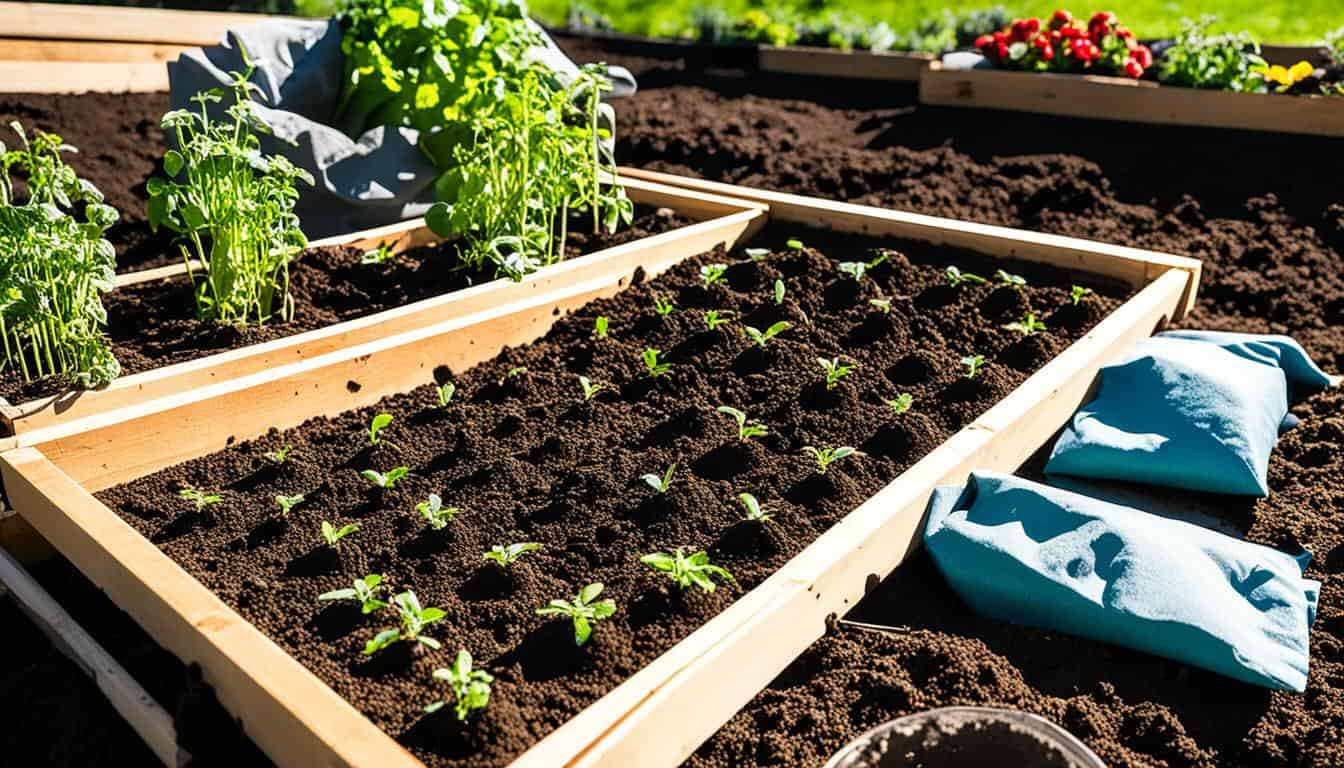
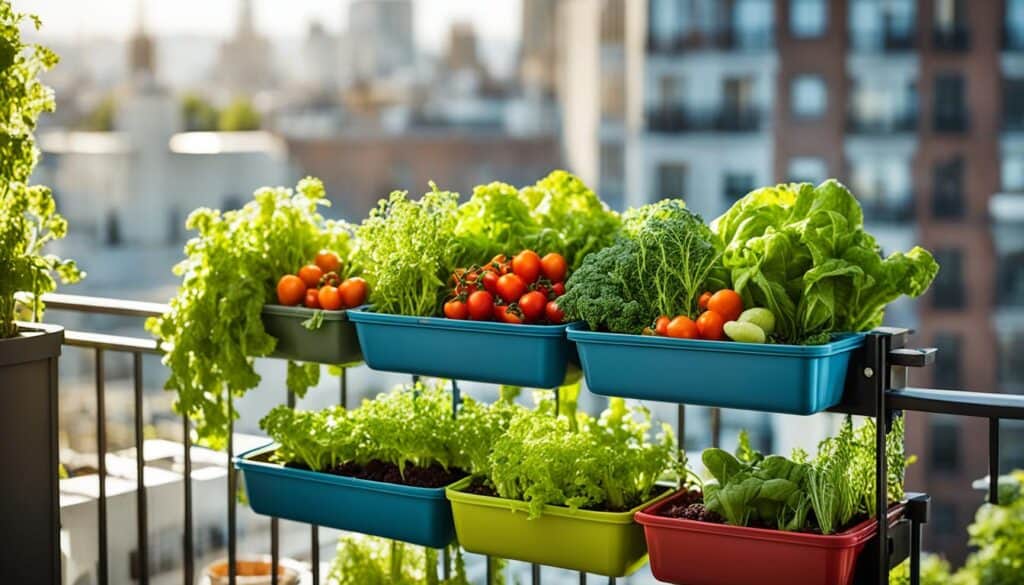

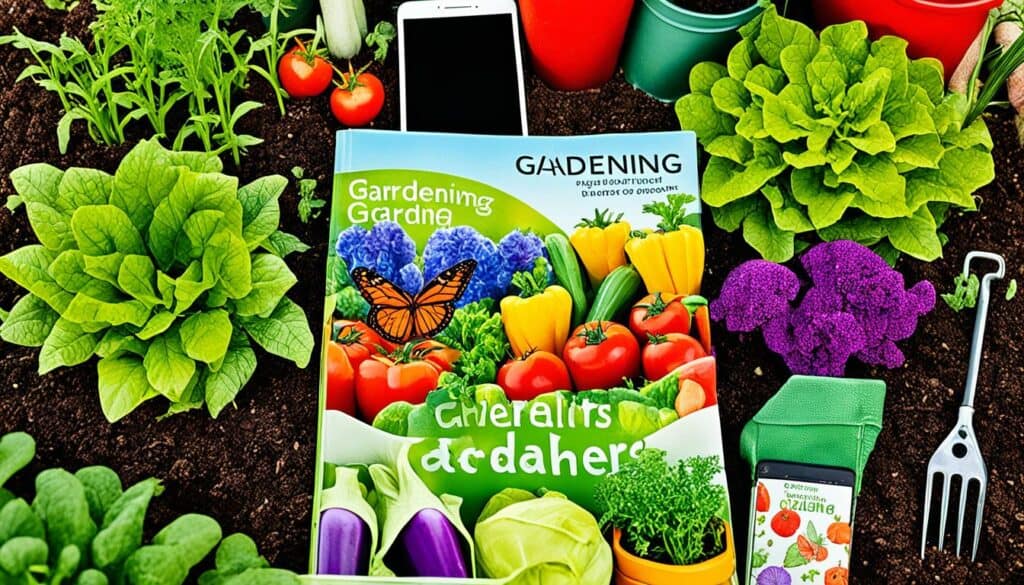
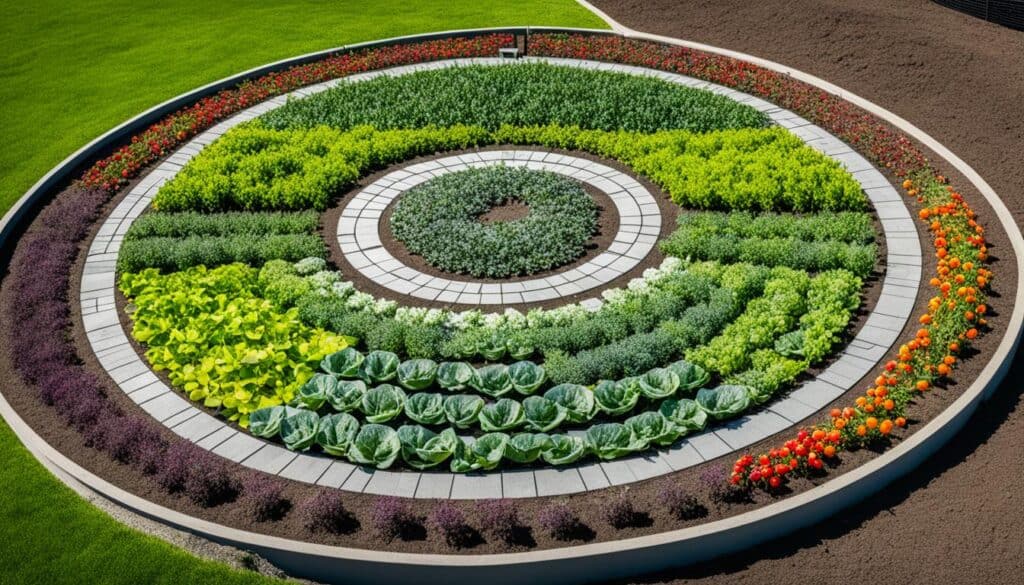
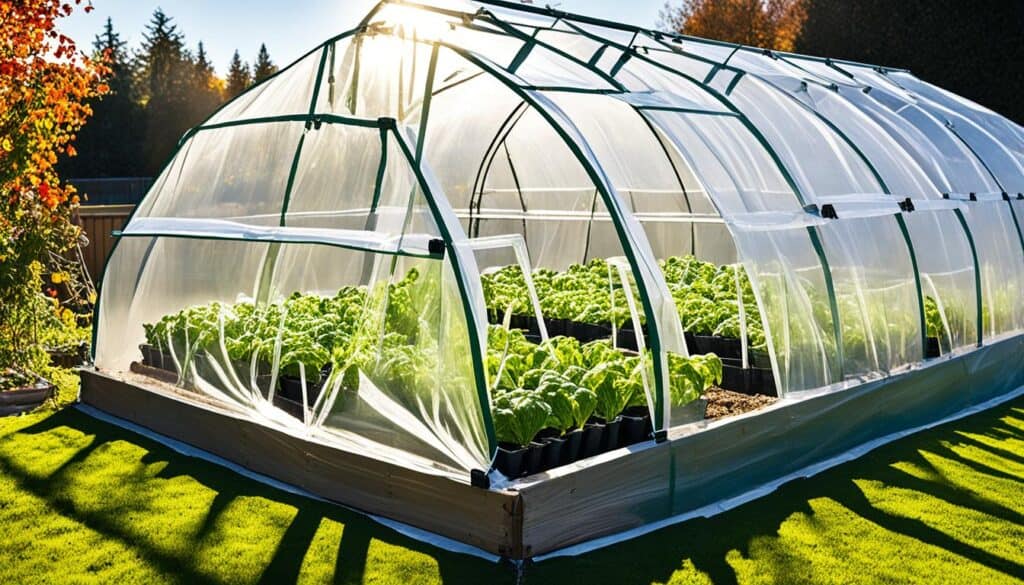



Leave a Reply